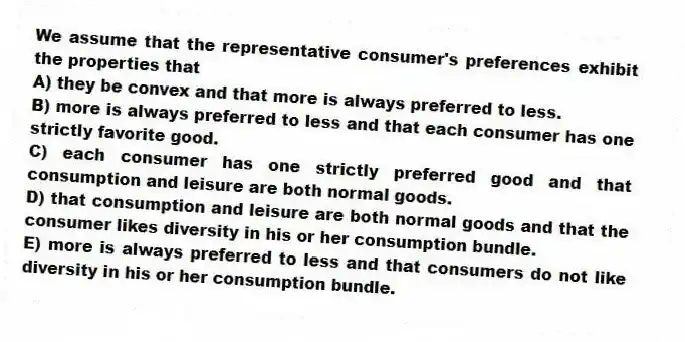
We assume that the representative consumer's preferences exhibit the properties that
A) they be convex and that more is always preferred to less.
B) more is always preferred to less and that each consumer has one strictly favorite good.
C) each consumer has one strictly preferred good and that consumption and leisure are both normal goods.
D) that consumption and leisure are both normal goods and that the consumer likes diversity in his or her consumption bundle.
E) more is always preferred to less and that consumers do not like diversity in his or her consumption bundle.
Correct Answer:
Verified
Q2: A utility function
A) needs to measure the
Q3: A utility function
A) is a stand-in for
Q4: The consumer's work-leisure choice problem focuses on
Q5: A static decision is one that
A) is
Q6: An indifference curve is best defined as
A)
Q8: We assume that the representative consumer's preferences
Q9: A good is normal for a consumer
Q10: An indifference curve
A) connects a set of
Q11: Two key properties of indifference curves are
Q12: The preferences of the representative consumer over
Unlock this Answer For Free Now!
View this answer and more for free by performing one of the following actions

Scan the QR code to install the App and get 2 free unlocks

Unlock quizzes for free by uploading documents